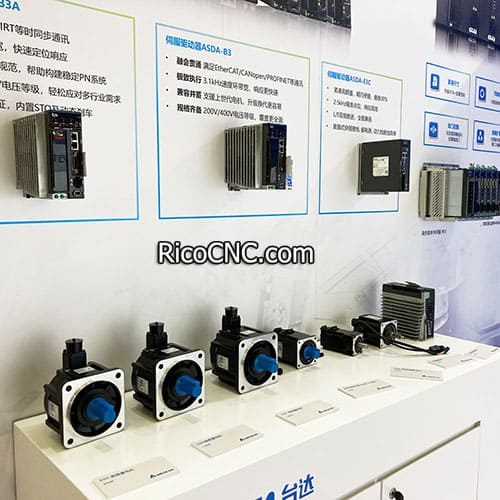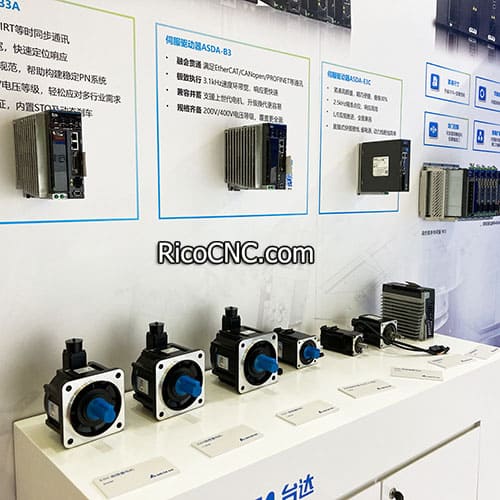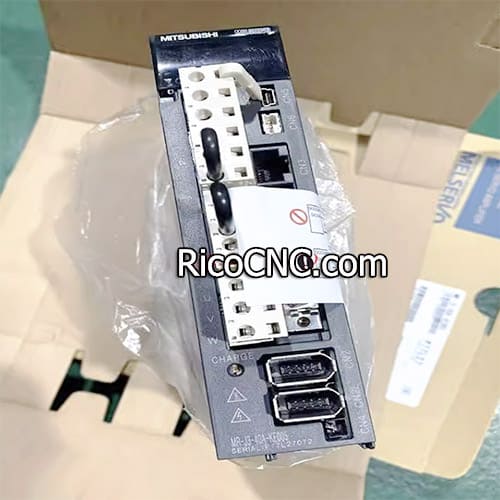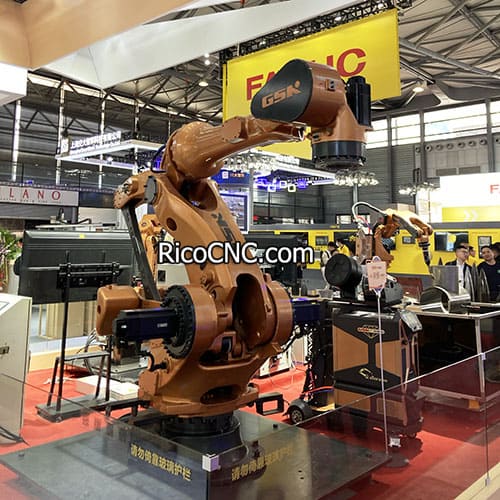
How Does a Servo Drive Work: Unveiling the Magic Behind Precision Motion Control
Ever wondered how robots move with such incredible precision? Or how manufacturing equipment can perform intricate tasks with pinpoint accuracy? The secret lies in a fascinating piece of technology called the servo drive. In this article, we'll dive deep into the world of servo drives, exploring their inner workings, applications, and the crucial role they play in modern automation. Whether you're an engineering enthusiast, a budding roboticist, or simply curious about the technology that powers our industrial world, this guide will provide you with valuable insights into the servo drive's working principle and its impact on various industries.
What Is a Servo Drive and Why Is It Important?
A servo drive is an electronic device that powers and controls a servo motor, forming the heart of a servo system. But what makes it so special? Let's break it down:
Precision Control: Servo drives allow for extremely accurate control of motor position, speed, and torque.
Feedback Mechanism: They use sensors to constantly monitor the motor's performance and make real-time adjustments.
Versatility: Servo drives can be used in a wide range of applications, from small hobby projects to large-scale industrial automation.
Understanding how servo drives work is crucial for anyone involved in robotics, manufacturing, or any field that requires precise motion control. By the end of this article, you'll have a solid grasp of servo drive basics and appreciate their significance in modern technology.
How Does a Servo Drive Actually Work?
At its core, a servo drive works by controlling the power supplied to a servo motor based on feedback from sensors. Here's a step-by-step breakdown of the process:
The servo drive receives a command signal from a controller, specifying the desired position, speed, or torque of the motor.
It then supplies the appropriate voltage and current to the servo motor to achieve the commanded motion.
Sensors (typically encoders) on the motor shaft provide feedback about the motor's actual position and speed.
The servo drive compares this feedback to the original command signal.
If there's any discrepancy, the drive adjusts the power output to the motor to correct the error.
This process happens continuously in a closed loop, ensuring precise and responsive motor control.
This closed-loop control system is what sets servo drives apart from simpler motor controllers, allowing for the high precision and reliability needed in many applications.
What Are the Main Components of a Servo System?

A complete servo system consists of several key components working together:
Servo Drive: The electronic device that powers and controls the motor.
Servo Motor: The actuator that converts electrical energy into mechanical motion.
Encoder or Feedback Device: Sensors that provide information about the motor's position and speed.
Controller: The brain of the system that sends commands to the servo drive.
Power Supply: Provides the necessary electrical power for the system.
Each component plays a crucial role in the overall performance of the servo system. The servo drive acts as the intermediary between the controller and the motor, interpreting commands and ensuring they're executed accurately.
How Does a Servo Drive Differ from Other Motor Controllers?
Servo drives stand out from other motor controllers in several key ways:
Closed-Loop Control: Unlike open-loop systems, servo drives continuously monitor and adjust motor performance.
Precision: Servo drives offer much higher accuracy and repeatability than standard motor controllers.
Dynamic Response: They can quickly respond to changes in load or command signals.
Versatility: Servo drives can control position, velocity, and torque, often switching between these modes on the fly.
Feedback Utilization: They make use of encoder feedback for precise control, unlike simpler controllers.
These features make servo drives ideal for applications where precise motion control is critical, such as in CNC machines, robotics, and advanced manufacturing equipment.
What Are the Key Features of Modern Servo Drives?

Today's servo drives are packed with advanced features that enhance their performance and versatility:
Auto-Tuning: Many drives can automatically optimize their control parameters for the connected motor.
Multiple Control Modes: Switching between position, velocity, and torque control as needed.
Network Connectivity: Integration with industrial networks for seamless communication with other systems.
Safety Functions: Built-in safety features like Safe Torque Off (STO) to prevent unexpected motor movement.
Diagnostic Capabilities: Advanced monitoring and troubleshooting tools to minimize downtime.
Energy Efficiency: Features like regenerative braking to recover and reuse energy.
These features make modern servo drives powerful tools in the world of automation and motion control.
How Do Servo Drives Contribute to Industrial Automation?
Servo drives play a crucial role in industrial automation, enabling precise and efficient operation of various machines and processes:
Robotics: Powering robot arms and automated guided vehicles (AGVs) with precise movement control.
CNC Machines: Enabling accurate cutting, milling, and shaping in computer-controlled machine tools.
Packaging and Assembly Lines: Ensuring consistent and rapid product handling and packaging.
Printing and Textile Machinery: Providing precise control for paper feed and fabric handling.
Renewable Energy: Controlling the pitch of wind turbine blades for optimal energy generation.
The ability of servo drives to provide precise, repeatable motion control is fundamental to the efficiency and quality of modern manufacturing and industrial processes.

MR-J3-40A-KE005 AC Servo Drive MITSUBISHI: A typical industrial servo drive
What Challenges Do Servo Drives Face?
While servo drives offer numerous advantages, they also face some challenges:
Complexity: Servo systems can be more complex to set up and tune compared to simpler motor controllers.
Cost: High-performance servo drives and motors can be expensive, especially for large-scale applications.
Maintenance: The precision components in servo systems may require more frequent maintenance.
Noise and Interference: Servo drives can generate electrical noise that may interfere with other electronic systems.
Heat Generation: High-performance servo drives can generate significant heat, requiring careful thermal management.
Addressing these challenges is an ongoing focus for servo drive manufacturers, with continuous improvements in design and technology.
How to Choose the Right Servo Drive for Your Application?
Selecting the appropriate servo drive is crucial for optimal system performance. Here are some factors to consider:
Motor Compatibility: Ensure the drive is compatible with your servo motor type (AC, DC, brushless, etc.).
Power Requirements: Match the drive's power output to your motor and application needs.
Control Modes: Choose a drive that offers the control modes (position, velocity, torque) your application requires.
Feedback Options: Verify that the drive supports the type of feedback device (encoder, resolver) you're using.
Communication Protocols: Ensure the drive can integrate with your existing control system and networks.
Environmental Factors: Consider factors like operating temperature, humidity, and vibration in your application environment.
For example, the MDDLN45SE Panasonic AC Servo Driver is a high-performance drive suitable for various industrial applications, offering features like advanced auto-tuning and multiple control modes.
What Does the Future Hold for Servo Drive Technology?
The world of servo drives is constantly evolving, with several exciting trends on the horizon:
Increased Integration: More servo drives are incorporating additional functionality, such as motion controllers and safety systems, into a single package.
AI and Machine Learning: Advanced algorithms are being developed to improve auto-tuning and predictive maintenance capabilities.
IoT Connectivity: Greater integration with the Industrial Internet of Things (IIoT) for improved data collection and system optimization.
Energy Efficiency: Continued focus on reducing power consumption and improving energy recovery systems.
Miniaturization: Development of smaller, more compact servo drives for space-constrained applications.
These advancements promise to make servo drives even more powerful and versatile tools in the world of automation and motion control.
Key Takeaways: Understanding Servo Drive Operation
To wrap up our exploration of servo drives, here are the most important points to remember:
Servo drives are electronic devices that control servo motors with high precision.
They operate in a closed-loop system, constantly adjusting based on feedback from sensors.
Servo drives are crucial in applications requiring accurate position, speed, or torque control.
There are various types of servo motors, each suited for different applications.
Modern servo drives offer advanced features like auto-tuning and multiple control modes.
Servo drives play a vital role in industrial automation across numerous sectors.
Choosing the right servo drive involves considering factors like motor compatibility, power requirements, and control needs.
The future of servo drive technology includes greater integration, AI capabilities, and improved energy efficiency.
RicoCNC will always be here when you have quesitons.

















